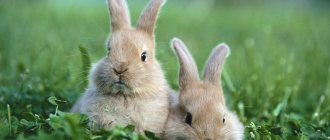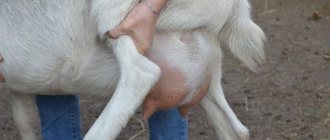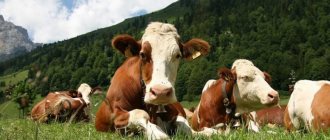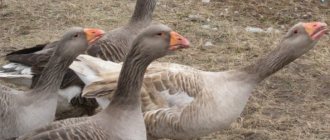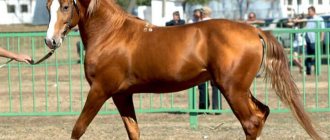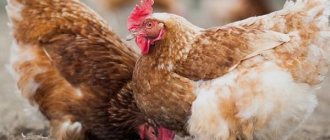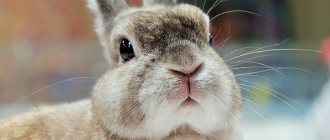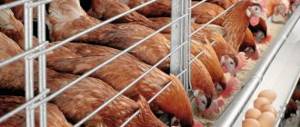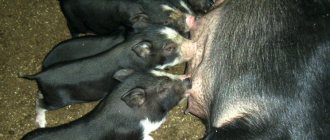The best breeds for home breeding
If you are determined to have a small rabbit farm in your country house, decide on the breed that you will raise. Conventionally, all types of eared animals can be divided into 3 main categories:
- meat - growing for slaughter;
- downy - giving beautiful fur;
- Meat and skin breeds are universal breeds.
There are also decorative breeds - people keep them at home as favorite pets. They are not suitable for breeding in the country.
What is the best age to buy a rabbit?
Meat breed Flanders
The largest type of rabbit, from which other breeds subsequently evolved. With a body length of about 70 centimeters, these animals are capable of producing more than 10 kilograms of pure meat! Features:
- muscular body;
- long ears;
- various colors - kangaroo, beaver, brown.
Among the disadvantages of the breed are the need for large volumes of food, difficulties in caring for the fur, and large free spaces for living.
Rabbit Flandre
Meat breed New Zealand White
These robust creatures with a pure white color are capable of producing up to 5 kilograms of meat per head. They are distinguished not only by the color of their coat, but also by their strong, muscular body with no fat.
New Zealand Whites grow quickly and produce large litters - a female can give birth to up to 12 cubs. In addition, they are unpretentious in maintenance.
New Zealand white rabbit
Meat breed Ram
Externally, the “lambs” resemble individuals of the Flanders breed. They are also similar in terms of productivity parameters: with a frequent rounding of 9 heads, you will receive up to 9 kilograms of meat per individual.
A distinctive feature is long hanging ears and a gentle disposition.
Rabbit Ram
Downy breed White downy
Despite the predominance of white-colored individuals of this breed, there are also blue and black rabbits. Special features:
- strong body up to 55 centimeters in length with an average weight of 4 kilograms;
- endurance, ability to adapt to climatic conditions.
When receiving up to 7 cubs at a time, you can remove up to 700 grams of fluff from a male and up to a kilogram of fluff from a female per year. White down ones are distinguished by light and delicate down of high strength and elasticity.
White fluffy bunny
Down breed Angora down
These cute animals are so beloved by people that they often live in homes and as pets. “Angorka” is easy to distinguish from other breeds - in appearance the animal resembles a fluffy ball. The weight of adult individuals is only 3-4 kilograms. But in a year they produce up to 1.5 kilograms of wool per head!
The breed also has its disadvantages: the coat needs to be carefully looked after, trimmed once every few months. In addition, Angora rabbits are extremely thermophilic - dampness and cold do not suit them.
Angora down rabbit
Rabbit breeds for home breeding
There are three main types of rabbits: meat, down and combined. The best meat breed rabbits allow you to get a sufficient amount of dietary meat, due to the fact that they have good weight and fatness. Profitable breeds of rabbits for breeding have been identified by experienced rabbit breeders.
California rabbit breed
They are small in size, but weigh well up to 5 kg. External characteristics: white color, nose, ears, paws and tail dark brown.
To breed rabbits of this breed, you must first create a family. On average, there are from 5 to 10 females per male. In such a family, you can get up to 5 sprinkles in one year.
Animals of this breed are unpretentious in terms of living conditions and can easily withstand both cold and heat.
Rabbits Ram
These are the largest representatives of lop-eared rabbits, females of which can weigh over 5 kg, and males up to 4.5. The skin and fillet of this breed are of excellent quality, so this type of family is quite common on different continents.
Raising sheep rabbits is mostly necessary to obtain tasty and healthy meat. In order for animals to develop and reproduce comfortably, it is best to build a spacious cage or enclosure for them.
From one litter you can get up to 12 rabbits, despite the fact that the female rabbit is able to bear cubs when her age does not reach even one year.
Breeding Rex rabbits
This breed originated in a French city. The Rex rabbit weighs up to 4 kilograms, but is not very fertile. A female rabbit can bring up to 5 rabbits (in one birth).
Despite the existing shortcomings, one cannot help but appreciate the taste of the meat of this breed of rabbit. It contains a minimal amount of fat, so it does not affect the condition of the figure in any way. In addition, the skin is very valuable, so it is used in the production of high-quality products.
Rabbits Butterflies
They are a Belarusian breed. At one time, a female can bear about 8 rabbits. An adult weighs up to 4.5 kg. The skin is valued because it has an interesting pattern.
Animals are able to adapt to harsh climates, which is why they are quite popular in Russian latitudes.
Breeding Flanders rabbits
This breed is most suitable for breeding meat rabbits. Animals are also used for breeding purposes to improve other breeds.
Rabbits can quickly gain weight up to 25 kg. The body of the animals is long, covered with beautiful and thick fur.
Rabbits of the gray giant breed
They belong to the meat breeds because in adulthood they reach a weight of about 7 kg. At one time, females are able to bring up to 10 rabbits, which after three months gain about 3 kg of weight.
Giant Rabbits Risen
The weight of animals can be 15 kg. Under the right feeding conditions, slaughter yield can be around 83%.
The most unpretentious breeds of rabbits for breeding: Californian, white and gray giant. When choosing an animal, it is very important to pay attention to its size, build and ability to gain weight (especially when it comes to meat rabbits).
A very profitable activity for the garden
If you are used to spending the summer at the dacha, then raising rabbits may be relatively easy for you. Such a pastime will not only bring pleasure, but will also be a financially profitable activity.
The ability of these animals to often give birth to offspring, their precociousness and high rate of muscle mass growth make it possible to always have fresh rabbit meat on the table with a delicate taste. Meat has an extremely low content of unhealthy cholesterol and is 90% digestible by the human body.
Rabbit fur is highly dense and soft. It is perfect for sewing fur products. Little children love rabbit mittens, slippers and vests, which gently fit to the body, warming it even in severe frosts.
In this article we will tell you how to breed rabbits in a summer cottage and raise resilient offspring that are resistant to temperature changes and various infections.
Rabbits in the country
Rabbits in the country: what conditions need to be created for their cultivation and breeding? how to feed these animals? what are the features of caring for them? These questions are of interest to many summer residents, since a rabbit is an animal that can easily live in a minimal area without disturbing neighbors with either smell or sound. At the same time, rabbit meat is ideal even for dietary nutrition.
Rabbits do not occupy a large area, and do not interfere with either smell or sound.
Where to begin
A small rabbit farm in the country is relatively simple to organize. You can start breeding starting with one rabbit. Most often, after purchasing the first little rabbit, there is a desire to buy another, and then another. They are quite cute and harmless. Children play with pleasure with little rabbits; they quickly get used to their hands and stop experiencing stress from communicating with people.
For shopping for babies, large boxes are used, in which holes are cut for breathing during transportation. They put a little hay at the bottom, the smell of their home is soothing while they are transported from the market to the dacha.
Advice. The brought livestock must be sent to special housing. If it has not yet been built, then it urgently needs to be done. In the meantime, it is advisable to place the young animals so that the rabbits can eat grass. They should be protected from cats and dogs and fences should be provided. Otherwise, the kids may run away.
Comfortable living conditions
Before purchasing and raising the breed of your choice, you need to prepare suitable living conditions for rabbits. Set aside the most calm and windless corner of your dacha for their home. It should always be warm and dry there - dampness has a detrimental effect on the health of fluffy ones.
Pay attention to the cardinal directions - the cells should face east, and the back wall should face west. If you place the cages facing south, the offspring will grow weak - direct sunlight has a bad effect on the condition of the young.
Rabbits need to be provided with comfortable living conditions.
Rabbits also easily tolerate mild winters outside, but when severe frosts occur, the animals need to be moved to warm rooms.
Forms of content
There are several ways to keep rabbits:
- in a common room - in a pit, basement, enclosure, attic, etc.;
Keeping rabbits in a common area - in separate cells installed individually or in a single battery.
Keeping rabbits in different cages
The first method seems much less labor-intensive and more economical - there is no need to spend additional money and time on purchasing or creating cells yourself. However, this method has many disadvantages:
- control over fertilization and fertility between close relatives is lost, as a result of which the population increases sharply in size and then sharply tends to extinction;
- when diseases occur, the entire herd is affected within a matter of hours;
- Fights for territory, food or females between individuals of the same sex become more frequent. Serious injuries and even death are possible.
Rabbits fighting for territory
Therefore, the method of keeping rabbits in cage batteries with a separate territory for each individual is considered the most preferable.
What methods of keeping rabbits are suitable for a summer cottage?
Several options are suitable for keeping rodents on the site:
- common room - pit, enclosure, attic, basement;
- separate cells - single or installed like batteries;
- mini-farms.
Keeping rabbits in cages
As for the first option, some livestock breeders consider it the least labor intensive and the most economically profitable. You will not have to make additional financial investments to purchase cells or materials for their construction. However, there are some disadvantages:
- uncontrolled reproduction, which results in inbreeding, leading to degeneration;
- one individual with an infection will very quickly infect the entire herd;
- the presence of fights for territory, food, females, as a result of which animals can receive serious injuries, often incompatible with life.
Based on the above, preference should be given to individual cages, batteries or mini-farms, where individuals will have their own territory, and therefore conflicts will be minimized. The owner will be able to control breeding and promptly isolate sick animals.
Seasonality
In the summer, only those animals that will not be taken to the city are raised. The lifespan of dacha rabbits is limited by the period of stay of dacha inhabitants on their plots. Some residents of dacha villages who live outside the city permanently note the following: with the end of the dacha season, rabbits appear in the area, which compassionate owners did not dare to slaughter and released into the wild. Then, almost all winter, such rabbits are hunted. They are poorly adapted to life in nature, they damage plantings, and apple, pear, currant and other trees and bushes suffer.
Advice. If you took rabbits for the summer, then you don’t need to leave your problems to other summer residents. They need to either be realized or scored.
Catering
The main food for rabbits is hay or special feed, which is available in a variety of options. Fresh grass from a summer cottage is also suitable, but only as complementary food that can enrich the animal’s diet.
To provide the livestock with adequate nutrition it is necessary to add:
- vegetables and fruits, carefully so as not to harm;
- cereals, specially prepared grain mixtures;
- greens (especially alfalfa and dandelions);
- twigs of cherry, apple and other fruit trees.
Dandelions for rabbits
Fill the feed with water, let it stand, then mix with boiled potatoes and soft vegetables. By following a few simple rules, you can ensure adequate nutrition and achieve rapid weight gain.
Some types of fruit are not suitable for feeding rabbits:
- apricots;
- plums;
- citrus.
Bananas should be given rarely and with caution due to their high calorie content. Thoroughly remove seeds and peel from melons, watermelons, and pumpkins and chop them. Animals enjoy eating apples and pears, especially those grown on their own property.
Carefully select vegetables for complementary feeding. Unsuitable:
- raw potatoes;
- fresh cabbage;
- peas, beans, legumes.
Giving carrots and beets is useful, but in small quantities. Cucumbers promote milk production in females.
Vegetables and fruits should be introduced into the diet of young rabbits gradually, no more than one type at a time, in order to assess the individual reaction to the body.
What to feed?
To raise rabbits in the countryside, tap water and pasture are not enough. Like any animal, eared ears require a complete and varied diet. Their diet should consist of fresh fruits and vegetables, cereals, greens (rabbits love alfalfa and dandelions), and branches of fruit trees.
Read also: Reasons why a rabbit bites
There is a huge selection of feed and grain mixtures on sale. When using mixed feed, it should be taken into account that its percentage of the total amount of food should not exceed 80%; it should be soaked and diluted with boiled potatoes or zucchini, pumpkin. Some simple tips will help keep your animals healthy.
How to choose manufacturers
If you decide to fatten eared pets and do not plan to cross them with each other, then you can purchase animals from the same litter, placing them in individual cages. In this case, you are guaranteed to save yourself from giving birth and the need to decide where to put the newly born rabbits in the fall.
For year-round breeding, it is best to purchase future sires from different breeders. This is guaranteed to protect against inbreeding, which inevitably leads to the gradual degeneration of the livestock and the birth of non-viable offspring.
Be sure to ask to see the female rabbit whose offspring you decide to breed at your dacha. This will help to assess the industrial prospects of animals with a high degree of reliability.
To inject fresh blood into the livestock, purchase a male meat breed. In the conditions of our country, the gray giant is perfect for this, whose offspring will be hardy and larger in size.
Remember that mating animals that are closely related reduces the productivity of the mini-farm, so regularly purchase new sires from other farms.
How to choose rabbits?
Among more than 200 breeds of rabbits, you have to choose 1 or 2. While you do not have enough experience, give preference to the least demanding ones:
- white and gray giant;
- Californian;
- chinchilla.
Chinchilla rabbit
Animals of these breeds have thick, beautiful fur and rapid weight gain. Considering that the summer season is limited, it is reasonable to breed New Zealand White or White Pannonian broiler rabbits. An individual is capable of gaining up to 5 kg over the summer and giving birth to 8-9 cubs.
Already at the very beginning of breeding, do not be afraid to cross breeds: female broilers will give birth to larger, more beautiful offspring from a male large white rabbit.
When choosing specific animals, pay attention to their behavior and appearance. Give preference to active and clean ones. This indicates their health. It is best to purchase pets in places where they are bred on rabbit farms. There you:
- get useful recommendations from the farmer;
- see what an adult of the selected breed looks like;
- Observe the behavior of young animals in their natural environment.
The number of individuals for breeding can be limited to four - 3 females and 1 male. Keep in mind that it takes a rabbit 4 months to reach productive age, so purchase the animals in advance. They can be kept in the apartment until the weather warms up and they finally move to the site.
Result of summer cultivation
By mid-October, rabbits can grow to quite impressive sizes. Males up to - 3.5-4, and females - 3.3-3.5 kilograms. In addition to dietary meat, skins, and fluff, you can also get valuable fertilizer from rabbits. Which can be planted in warm beds and applied in the fall for future plantings of vegetables and potatoes.
Raising rabbits in the summer is, firstly, an exciting activity. Which will be useful for younger family members. It will help teach them to work and responsibility. Secondly, this is a good idea for a business: with low costs you can get quite a decent income.
Secrets of breeding and raising rabbits
- Breeding
What breeds are best suited for growing in small summer cottages?
Considering that people live in their dachas only during the spring and autumn season, it is better to buy the first batch of rabbits at the end of winter or early spring.
This is best done on large farms. They will tell you which breed produces more meat, what the actual size of an adult is, and when males and females can mature and mate.
Breeds that quickly gain weight are suitable for summer cottages: then in 1 season it will be possible to raise 2-3 batches of young animals. The best option would be to raise broilers. To do this, it will be enough to buy 3-4 adult rabbits and 1 male, and young animals will be provided during the summer. Farmers even identified specific breeds suitable for the garden: New Zealand whites and California reds. For males, it is better to take a lop-eared ram, a gray or white giant.
As practice has shown, combining different breeds makes it possible to accelerate the growth of young animals, so that already at 3 months the animals have sufficient weight to be slaughtered and eaten (a rabbit carcass weighs approximately 3.5 kg).
It is a mistake to think that you need to stock up on a lot of pasture for rabbits. Rabbits in the country can eat a wide variety of foods. The main thing is that they contain a sufficiently high concentration of useful and nutritional elements.
Rabbits do not readily eat dry food, so experienced rabbit breeders lightly moisten the dry mixture.
Rabbits do not always eat all the components of this food, so the grind should be fine and everything should be thoroughly mixed when serving.
Knowing that rabbits are reluctant to eat dry food, farmers recommend giving them slightly moistened additives. You can add boiled potatoes or pumpkin to them.
At each feeding, you need to calculate the portion so that it does not remain in the feeder. Any food that has been left in the heat for some time will cause an upset stomach in the animal.
Read also: Structure of the digestive system of a cow
There is no formula for calculating feed for 1 individual - you just need to observe how much a particular rabbit eats and adjust the amount at each feeding.
In the summer, it is better to give rabbits more succulent feed (there is more than enough of it at the dacha), and feed only early in the morning and at night. This will make the entire growing process less expensive.
- Water is the main component of nutrition
To ensure the health of rabbits, it is necessary to provide a regular supply of fresh water to each individual. There are certain requirements for the supply of water to the feeder:
- during each feeding, the water should be new and clean;
- It is better to slightly warm the water before serving, this is especially important for young animals;
- You cannot give water straight from the tap; it is advisable to let it sit for several hours.
Growing at home
Are you already quite confident in caring for and feeding rabbits? It's time to start raising fluffy ones yourself. On average, the gestation period for female rabbits lasts 30 days.
If you are running a farm to sell rabbit meat or fluff, you can adhere to the following profitable schedule:
- mating No. 1 - the last days of February, birth - the end of March, slaughter of young animals - mid-summer;
- mating No. 2 - May 15-16, birth - June, slaughter - late summer - early autumn;
- mating No. 3 - early July, birth - early August, slaughter - mid-autumn.
This way you will ensure an almost uninterrupted supply of fresh meat and skins.
Rabbit mating process
| Step | Description |
| Step 1 | Place the female with the rabbit. Wait for the mating process. |
| Step 2 | After mating, immediately return the female rabbit to her cage. |
| Step 3 | If necessary, repeat the previous steps after a couple of minutes. If after this the female rabbit avoids the male, the process can be considered successful. |
| Step 4 | Repeat the previous steps after a week to improve your chances. |
| Step 5 | After 2 weeks, check the effectiveness of the mating by palpating the female’s lower abdomen. At this time, the embryos should already be felt - they reach the approximate size of a hazelnut. |
If the female rabbit turns out to be “empty”, repeat the mating again.
The correct choice of males and females helps to achieve instant results. So, rabbits should be at least six months old, and females should be 5 months old and weigh at least 3-3.5 kilograms. The main condition is good health and average nutrition.
For the first 6 weeks, the babies are kept in their mother’s cage, then 5-6 of the same age and gender are placed in a cage.
For the first few weeks, the baby rabbits are kept with their mother.
When they reach three months of age, females are placed in cages of 2 each, males are given individual rooms.
How to breed
We breed rabbits in the country correctly: you need to purchase one good breeding male and several females for him. Male animals are capable of creating offspring from 6 months, and females from 5.
After the baby rabbits appear, the sick ones need to be culled. This is necessary so that future offspring are strong and healthy. One breeding male should be left in each brood. After reaching six months of age, female rabbits are attached to it.
Mating process
If you plan not only to keep rabbits in the country, but also to reproduce them, then you need to decide in advance when to mate. Pregnancy in females lasts 30 days, based on this, you can draw up the following schedule:
- Mating No. 1 - end of February. The offspring will appear on the 20th of March. In mid-summer, animals can already be sent for slaughter.
- Mating No. 2 - May 15-16. The cubs will be born in mid-June. You can get wool and/or meat in late summer and early autumn.
- Mating No. 3 - early July. The rabbits will appear in the first ten days of August. They can be sent for slaughter in mid-autumn.
Thanks to this, raising rabbits in the country for the summer will provide fluff and meat throughout the season. They can be used for personal use or put up for sale.
How to raise rabbits in the country:
- Place the female next to the male and wait for mating.
- After the process, place the rabbit back into her enclosure or cage.
- To ensure fertilization occurs, you can repeat the action after a couple of minutes. If the female began to avoid the male, the mating was successful.
- Repeat everything from the very beginning in a week to be sure of fertilization.
- After 12-14 days, palpate the rabbit’s lower abdomen. The embryos should already reach the size of a walnut.
- If there are no signs of pregnancy, repeat mating.
Expert opinion
Dobryshev Sergey Anatolievich
Professional rabbit breeder and hare breeder with 30 years of experience
For reference! If there are no offspring, then most likely the owner is doing something wrong. It is important to remember that rabbits in the country in the summer are capable of reproduction only when they reach six months (males) and 5 months (females). They must weigh at least 3-3.5 kg, be in good health and be of average fatness. If all the requirements are met, but conception still does not occur, it is better to show the individuals to a veterinarian.
For the first 6 weeks, the cubs must be kept close to their mother. After the specified time has expired, place 5-6 pieces in different cages (each should contain animals of approximately the same age and gender).
Video: breeding features
For beginners, it is recommended to watch this useful video about raising rabbits in the countryside in the summer:
Year-round stay of rabbits in the country
In winter, you can only have rabbits if you permanently live in the country and have the opportunity to regularly feed your pets and clean up after them.
You will need to build a special utility room that is resistant to Russian frosts. It should be provided with a natural or artificial ventilation system, which will reduce humidity levels and get rid of unpleasant odors.
You cannot do without an electric or stove heating system, the operation of which will need to be constantly monitored to prevent fires and fires.
Keeping animals in the countryside in the winter will require preliminary preparation of hay and other feed, as well as the purchase of compound feed rich in vitamin supplements and easily digestible microelements.
Such a room must be illuminated during the day. Rabbits tolerate twilight normally, but can go blind in the spring from the bright rays of the sun.
Breeding rabbits in the country for beginners
Breeding rabbits in the country is exciting and profitable. They provide dietary meat rich in protein, beautiful warm fluff and skins for making clothes. Keeping animals with the right approach will not cause much trouble. The rapid growth and maturation of individuals fits into 9-10 months of the dacha season, so it is quite possible to breed them in the dacha and receive benefits in the form of meat, fur and money from the sale.
Country breeding of rabbits
Methods suitable for country breeding
It is usually difficult for a summer resident to allocate a lot of space for breeding rabbits. Therefore, he has to choose one of several methods that allow him to raise a large number of animals in a limited area.
There are general and cage methods for keeping rabbits in the country, each of which has pros and cons.
With general maintenance, it is necessary to equip one large room in which animals of different sexes and ages will live together. Most often, large enclosures are built, which can be read about in the article “Peculiarities of keeping rabbits in enclosures.”
Some rabbit breeders build pens right on their summer cottage, giving the animals the opportunity to independently feed on green grass and dig holes. Read more about this in the article “About rabbit pens.”
In recent years, pit housing for long-eared pets has become increasingly popular. To do this, you need to dig a hole of any shape on the site with a depth of 1-1.5 m (depending on the breed of rabbits). Animals kept in this way have the opportunity to dig and arrange holes on their own, and the temperature regime is most suitable for their health.
Read about the technique itself, as well as its pros and cons, in the article “Raising rabbits in pits.”
How to keep rabbits in the country
In order for animal breeding to be productive, you need to know how to keep rabbits in the country. For them you need to choose a quiet, warm place, protected from drafts. The site is chosen to be dry, because high humidity can destroy the farm.
Pens, cages, etc. Be sure to look with the front part to the east, and the back part to the west. If you turn them to the south, the young animals will grow weakened.
Equipment of the place of detention
Rabbits on the site may be kept:
- In the pens. This allows animals to move freely around the territory, eat fresh greens, and dig holes.
- In the hole. It should be 1-1.5 m deep (depending on the size of the individuals), of any shape. Inside there will be an optimal temperature for animals, they will be able to safely dig holes.
- In cells. They should be 0.5-0.6 m deep, 50 cm high, and 1 m long. This is the most practical method of keeping, allowing, if necessary, to bring animals into the room and separate males and females.
Expert opinion
Dobryshev Sergey Anatolievich
Professional rabbit breeder and hare breeder with 30 years of experience
Note! If the cages are located on the street, then so-called sheds can be built for them to keep rabbits in the country in the summer. These are buildings with a canopy that house animals.
Rice. 9. Rabbits at the dacha in the summer in sheds.
Cage structure
Before raising rabbits in the countryside over the summer, you need to take care of the cages (if this type of housing is chosen). Their sizes:
- 0.5x0.7x0.3 m (for young animals);
- 0.5x1x0.3 m (for adults).
The cage should be divided into 2 zones:
- for walking;
- for sleep, rest and labor.
The part intended for walking should have one wall made of metal mesh. One will be both a door and a holder for the sippy cup and feeder. Its dimensions should be about 55 by 50 cm.
The resting place should be remote, i.e. made entirely of boards or plywood. Dimensions 25 by 20 cm. An opaque door should be made on the top or side, and a hole with a diameter of 15 cm should be made in the wall connecting the recreation area with the walk.
Video: DIY cage
Beginners in the field of rabbit breeding can watch a video on how to make a cage with your own hands:
What to feed
The diet consists of:
- concentrates (cereals, combined feeds, protein waste);
- coarse products (dried grass, poplar, willow, birch branches);
- greens (nettle, dandelions, root tops, yarrow, etc.);
- juicy food (cooked and raw potatoes, beets, earthen pears, cabbage).
Expert opinion
Dobryshev Sergey Anatolievich
Professional rabbit breeder and hare breeder with 30 years of experience
Important! Under no circumstances should animals be given elderberry, larkspur, celandine, horse dill, or wild rosemary. These plants are dangerous to health.
Concentrated feeds are recommended to be given early in the morning and late in the evening. During the day, give preference to greens and vegetables. Rough foods can be given at any time of the day, as a supplement to the main food.
The water must be warm, about +30 degrees. It is not recommended to use tap water. Better filtered or at least allowed to sit for several days. It is advisable to change the water every feeding.
Caring for rabbits
How to care for rabbits in the country:
- change pallets and bedding daily;
- carry out complete disinfection of cells, etc. 1 time every 2 months;
- examine every day for wounds and signs of pathological conditions, if necessary, take to a veterinary clinic;
- at the age of 1.5 months, get vaccinated;
- If an infection is suspected, quarantine sick animals and be sure to show them to a veterinarian.
Expert opinion
Dobryshev Sergey Anatolievich
Professional rabbit breeder and hare breeder with 30 years of experience
Note! Downy breeds need to be brushed once every 1-2 weeks.
Prevention and treatment of diseases
Rabbits are picky about their living conditions and are susceptible to infections that are transmitted from one individual to another. The disease often kills entire livestock. Therefore it is important:
- get vaccinated in a timely manner;
- be careful when choosing animals when purchasing;
- at the slightest sign of discomfort, place the rabbit in a separate cage away from others and contact a veterinarian.
In the first stages of animal breeding, you will encounter a number of problems that are easy to resolve, but next year you will get down to business taking into account the mistakes you have made and will be able to engage in country rabbit breeding with confidence and pleasure.
Reproduction
Rabbits quickly reach sexual maturity and are able to bear offspring within 4-5 months of life. They are prolific, with litters of up to 8 babies. The possibility of 4-5 births per year makes breeding these animals profitable. During the short summer season, they will bear offspring more than once. If you do not plan to live in the country in cold weather, take one pair of rabbits to a city apartment, and next year create a population of your own rabbits.
Read also: Why do rabbits die?
It is necessary to start breeding for the dacha at the end of winter in order to raise 2-3 batches of rabbits in a short summer.
Advantages and disadvantages
Keeping rabbits in the summer cottage is beneficial. There is an activity for children. Adults enjoy playing with small animals. The rabbits grow quickly. They are interesting to watch. Animals slaughtered in a timely manner produce excellent skins that are easy to tan with your own hands (there is no need to purchase expensive chemicals). Rabbit carcasses provide tasty and healthy meat. They are consumed boiled or fried. Many rabbit breeders make stew, which they then add to various dishes. Even smoked rabbit has an extremely original taste.
Flaws. At the end of the season, the animal must be slaughtered. Some people cannot overcome themselves. Here you should immediately think about whether it’s worth keeping if you don’t have the courage to slaughter it. Some invite neighbors to help resolve the problem.
How to properly organize rabbit breeding
Any breed is prolific and early maturing. Rabbits are caring mothers, but it is better not to pick up babies; the mother may abandon them.
Pairing. In order for mating to be successful, you need to get acquainted with the physiology and characteristics of the animals. If you are a novice rabbit breeder, it is better to invite a more experienced owner, he will give you advice and recommendations that you will need to listen to.
Mating should be planned so that the birth does not take place on hot or frosty days, but preferably in the spring. Two to three births are considered normal; it is not recommended for a female rabbit to have more births, as this may affect her health and the health of her offspring.
In representatives of small breeds, mating is possible at five months for female rabbits, and at six months for female rabbits. In large rabbits, this condition occurs later - at eight to nine months. Reproductive functions remain in female rabbits for up to three to four years.
Finding out that a female rabbit is ready to mate is very simple. To do this, just watch the animals. In this state, the animal's genitals become enlarged and change color.
